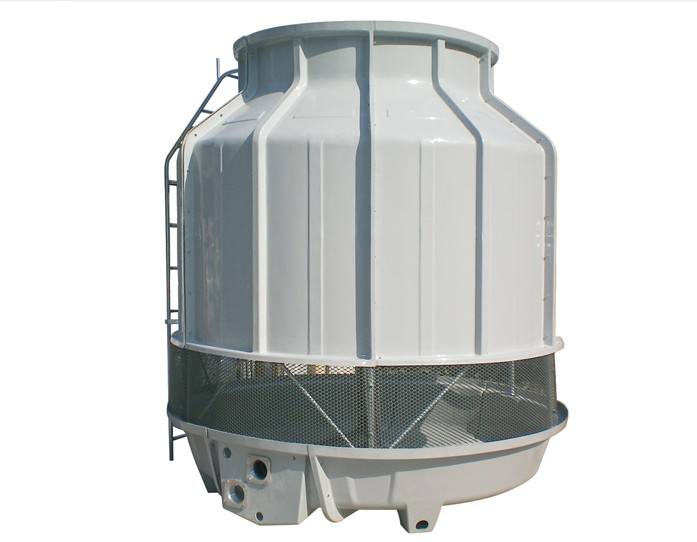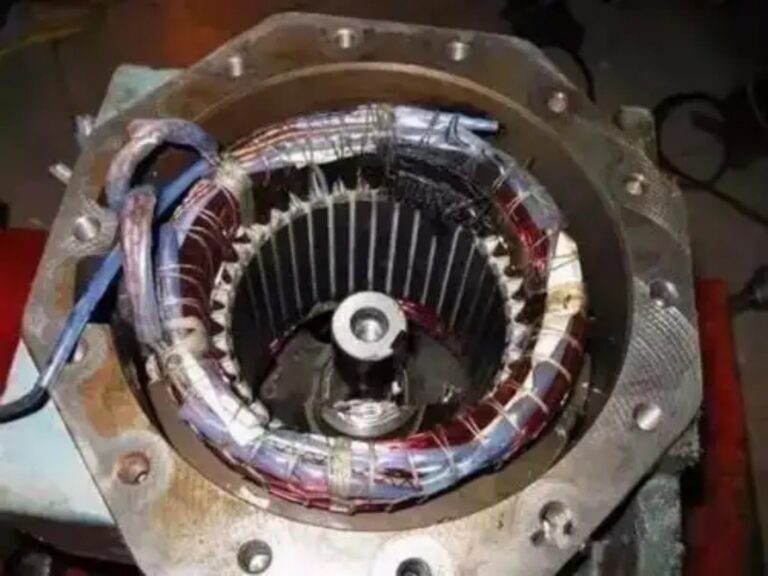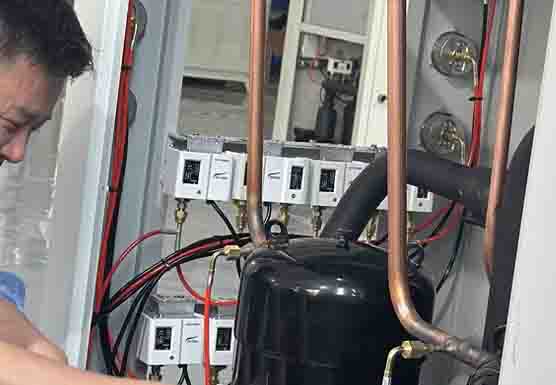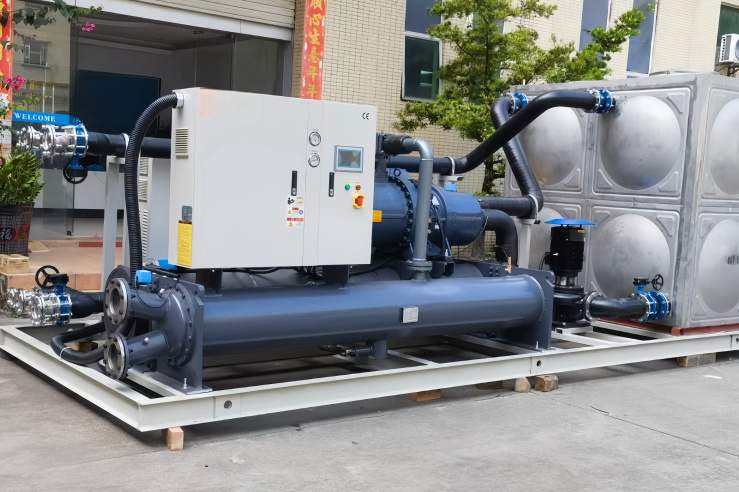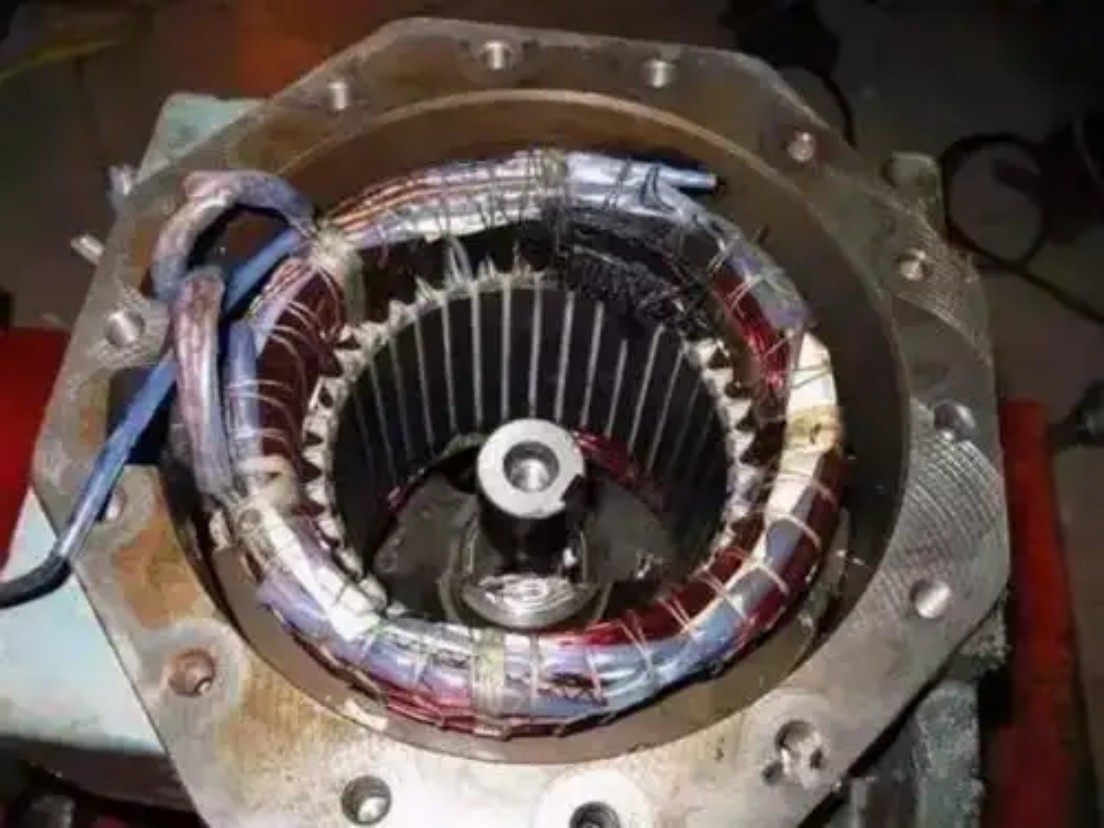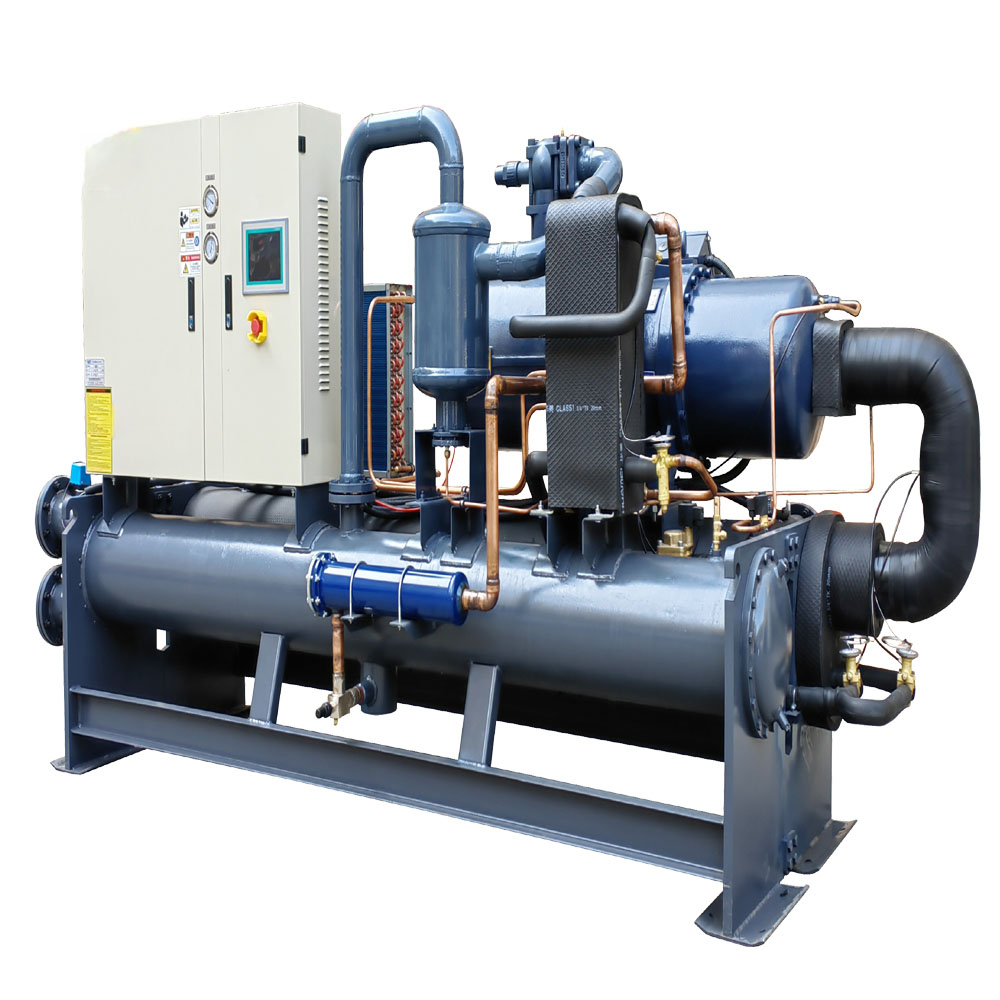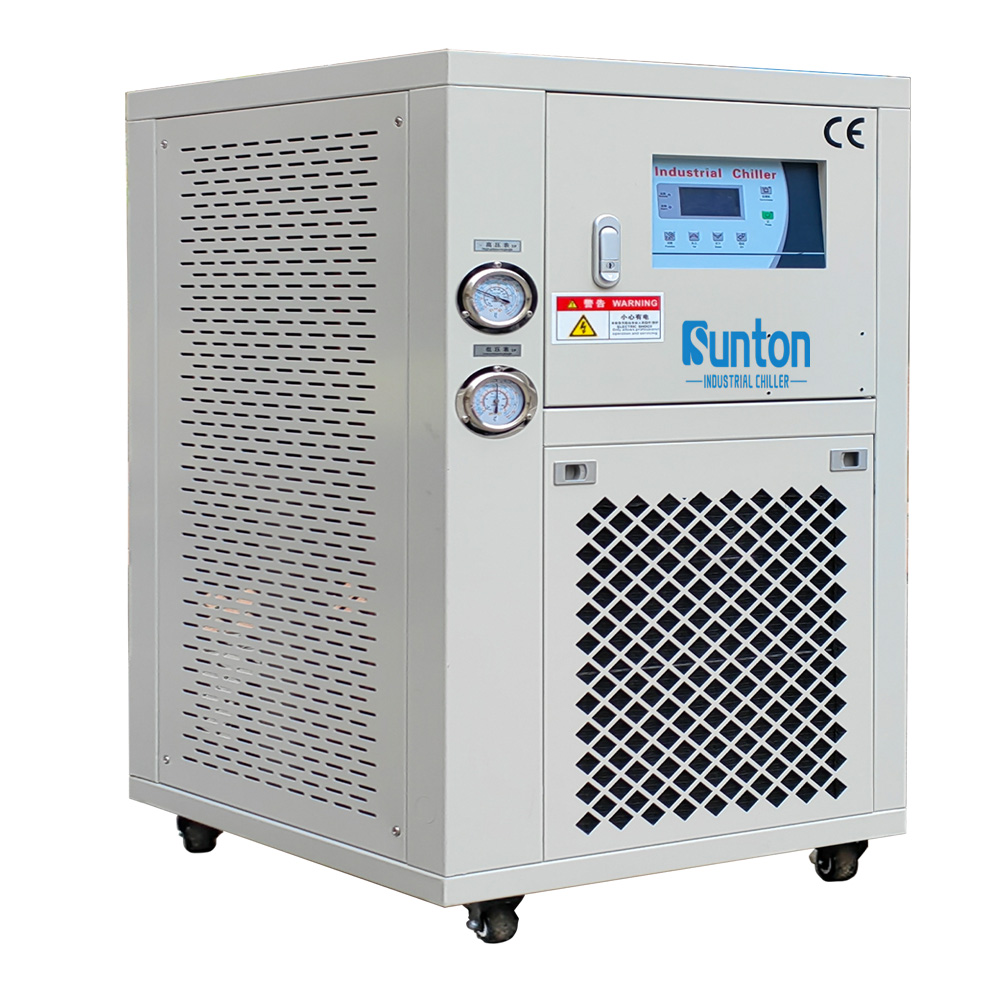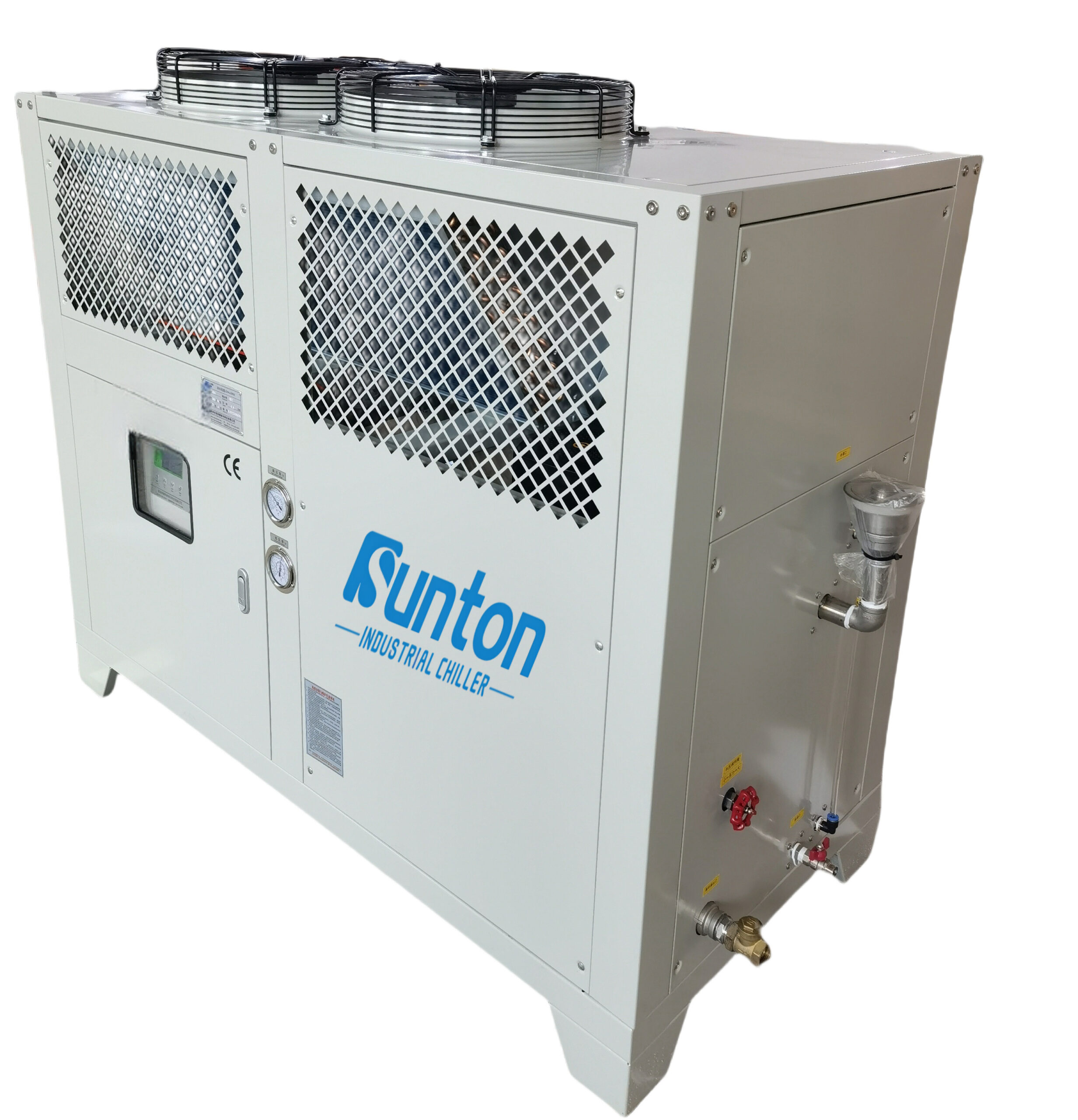-
डालिंगशान औद्योगिक गुआंग्डोंग
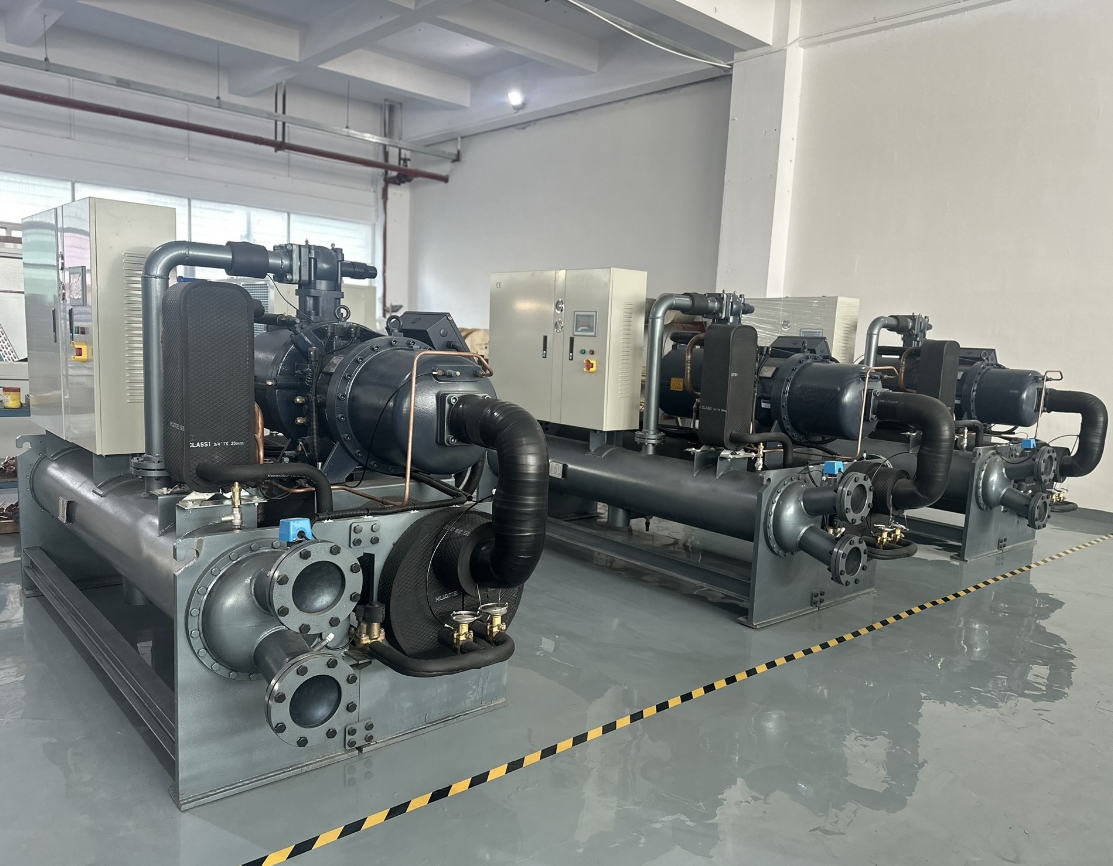
एडियाबेटिक शीतलन प्रणाली क्या है
एडियाबेटिक कूलिंग सिस्टम: बेहतर दक्षता के लिए औद्योगिक कूलिंग में क्रांतिकारी बदलाव
यह लेख रुद्धोष्म ऊर्जा की दुनिया पर प्रकाश डालता है शीतलन प्रणालियाँ, यह पता लगाना कि वे कैसे काम करते हैं, उनके फायदे, और वे विभिन्न उद्योगों में तेजी से लोकप्रिय क्यों हो रहे हैं। एक अग्रणी औद्योगिक वाटर चिलर निर्माता के रूप में, हम कुशल और विश्वसनीय की महत्वपूर्ण भूमिका को समझते हैं ठंडा कई क्षेत्रों में। हमारा लक्ष्य आपको इस अभिनव तकनीक के बारे में मूल्यवान जानकारी प्रदान करना है, जो आपके संचालन को अनुकूलित करने, लागत कम करने और पर्यावरणीय प्रभाव को कम करने की इसकी क्षमता को प्रदर्शित करता है। ठंडा पारंपरिक तरीकों के लिए एक आकर्षक विकल्प प्रदान करता है, और हमारा मानना है कि यह लेख यह बताएगा कि इस पर विचार करना आपके समय के लायक क्यों है।
विषयसूची
1. एडियाबेटिक कूलिंग क्या है और यह पारंपरिक तरीकों से किस प्रकार भिन्न है?
रुद्धोष्म शीतलन एक ऐसी विधि है जो हवा के तापमान को कम करने के लिए वाष्पीकरण की प्राकृतिक प्रक्रिया का उपयोग करती है। पारंपरिक शीतलन वे विधियाँ जो रेफ्रिजरेंट्स और कंप्रेसर्स पर निर्भर करती हैं, रुद्धोष्म शीतलन प्रणालियाँ पानी का उपयोग करें वाष्पीकरण आस-पास से गर्मी को अवशोषित करने के लिए परिवेशी वायुयह दृष्टिकोण ऊर्जा की खपत को काफी कम करता है और अधिक टिकाऊ प्रदान करता है ठंडा समाधान।
पारंपरिक शीतलन सिस्टम, जैसे एयर कंडीशनर और कुछ प्रकार के चिलर्सगर्मी को दूर करने के लिए यांत्रिक प्रशीतन चक्रों का उपयोग करते हैं। इन प्रणालियों को अक्सर कंप्रेसर को बिजली देने और रेफ्रिजरेंट को प्रसारित करने के लिए पर्याप्त मात्रा में बिजली की आवश्यकता होती है। इसके विपरीत, रुद्धोष्म शीतलन एक पर निर्भर करता है स्वतंत्र रूप से उपलब्ध प्राकृतिक संसाधन – जल – और का सिद्धांत परिवर्तन के माध्यम से गर्मी को कम करना हवा के दबाव के कारण आयतन विस्तार.के लिए आवश्यक ऊर्जा रुद्धोष्म शीतलन यह मुख्य रूप से पंखे और पानी के पंप चलाने के लिए है, जो कंप्रेसर आधारित प्रणालियों के लिए आवश्यक ऊर्जा से काफी कम है। शीतलन दक्षता यह काफी अच्छा है, खासकर गर्म और शुष्क जलवायु में।
इनके बीच अंतर रुद्धोष्म शीतलन और पारंपरिक तरीकों को संक्षेप में इस प्रकार बताया जा सकता है:
| विशेषता | रुद्धोष्म शीतलन | पारंपरिक शीतलन |
| शीतलन सिद्धांत | पानी का वाष्पीकरण | यांत्रिक प्रशीतन |
| ऊर्जा की खपत | कम | उच्च |
| पर्यावरणीय प्रभाव | कम (कार्बन पदचिह्न में कमी) | उच्चतर (रेफ्रिजरेंट उपयोग और ऊर्जा खपत) |
| रखरखाव | सामान्यतः कम | अधिक हो सकता है |
| पानी के उपयोग | कुछ पारंपरिक प्रणालियों की तुलना में अधिक | भिन्न-भिन्न, कुछ प्रणालियाँ पानी का उपयोग नहीं करतीं |
| शीतलन क्षमता | पर निर्भर परिवेश स्थितियाँ | परिवेशीय स्थितियों पर कम निर्भरता |
| प्रारंभिक लागत | अधिक हो सकता है | कम हो सकता है |
| संचालन लागत | निचला | उच्च |
2. एडियाबेटिक शीतलन प्रणालियाँ कैसे काम करती हैं?
रुद्धोष्म शीतलन प्रणालियाँ कार्य करती हैं पास करके परिवेशी वायु जल-संतृप्त माध्यम से, अक्सर गीला पैड या नोक प्रणाली। जैसे ही गर्म हवा पानी के संपर्क में आती है, पानी उड, हवा से गर्मी को अवशोषित करके उसका तापमान कम कर देता है। फिर इस ठंडी हवा को प्रसारित करके हवा प्रदान की जाती है ठंडा वांछित स्थान या प्रक्रिया पर।
इसके दो मुख्य प्रकार हैं रुद्धोष्म शीतलन प्रणालियाँ: प्रत्यक्ष और अप्रत्यक्ष। प्रत्यक्ष प्रणालियों में, ठंडी हवा ठंडा किए जा रहे स्थान पर सीधे आपूर्ति की जाती है। अप्रत्यक्ष रुद्धोष्म सिस्टम, एक उष्मा का आदान प्रदान करने वाला को स्थानांतरित करने के लिए प्रयोग किया जाता है ठंडा प्रभाव वाष्पित जल एक अलग वायु धारा या जल लूप में, जिससे किसी भी वृद्धि को रोका जा सके नमी वातानुकूलित स्थान में। जल प्रणाली हो सकता है बंद लूप, जिससे पानी पुनःपरिसंचरण करना और न्यूनतम करना पानी की खपत.
उदाहरण के लिए, हमारे औद्योगिक जल चिलर विनिर्माण संयंत्रों में, हम काम करते हैं रुद्धोष्म शीतलन हमारे साथ-साथ चिलर सिस्टम। उच्च अवधि के दौरान परिवेश का तापमान, द रुद्धोष्म शीतलन प्रक्रिया करने में मदद करता है हवा को पहले से ठंडा कर लें में प्रवेश चिलर'एस कंडेनसर, पर भार कम करना चिलर और इसकी समग्र दक्षता में सुधार होगा। अतिरिक्त शीतलन सिस्टम को कठिन परिस्थितियों में भी इष्टतम प्रदर्शन बनाए रखने की अनुमति देता है। हम इस तकनीक का उपयोग अपने जल-शीतित स्क्रू सेंट्रल चिलर.
3. एडियाबेटिक शीतलन प्रणाली के उपयोग के मुख्य लाभ क्या हैं?
रुद्धोष्म शीतलन प्रणालियाँ पारंपरिक तरीकों की तुलना में ये कई फ़ायदे देते हैं, जिससे ये कई तरह के अनुप्रयोगों के लिए एक आकर्षक विकल्प बन जाते हैं। इनमें से कुछ मुख्य लाभ इस प्रकार हैं:
- ऊर्जा दक्षता: रुद्धोष्म शीतलन पारंपरिक प्रणालियों की तुलना में यह काफी कम ऊर्जा की खपत करता है, जिससे लागत में काफी बचत होती है।
- पर्यावरण मित्रता: कम ऊर्जा खपत और रेफ्रिजरेंट पर कम निर्भरता के साथ, रुद्धोष्म प्रणालियाँ इनका कार्बन फुटप्रिंट छोटा होता है। ये पर्यावरण के लिए अच्छे होते हैं।
- कम परिचालन लागत: ऊर्जा के कम उपयोग से बिजली का बिल कम होता है, जिससे बिजली की खपत कम होती है। संचालन की कुल लागत.
- वायु गुणवत्ता में सुधार: रुद्धोष्म शीतलन धूल और अन्य प्रदूषकों को छानकर इनडोर वायु की गुणवत्ता को बेहतर बनाने में मदद मिल सकती है।
- मापनीयता और लचीलापन: रुद्धोष्म शीतलन इकाइयाँ विभिन्न अनुप्रयोगों की विशिष्ट आवश्यकताओं को पूरा करने के लिए इसे आसानी से बढ़ाया और अनुकूलित किया जा सकता है।
- शांत संचालन: कुछ पारंपरिक प्रणालियों की तुलना में, रुद्धोष्म कूलर अधिक शांति से काम करने की प्रवृत्ति होती है।
- छोटा पदचिह्न: रुद्धोष्म शीतलन प्रणालियाँ लीजिये छोटे पदचिह्न पारंपरिक की तुलना में ठंडा तरीके.
4. डेटा सेंटरों के लिए एडियाबेटिक कूलिंग आदर्श क्यों है?
डेटा केंद्र सर्वर और अन्य आईटी उपकरणों के विश्वसनीय संचालन को सुनिश्चित करने के लिए सटीक तापमान और आर्द्रता नियंत्रण की आवश्यकता होती है। रुद्धोष्म शीतलन के लिए विशेष रूप से उपयुक्त है डेटा सेंटर यह अपने क्षमता के कारण, अस्थिर ताप भार के तहत भी, कुशल और स्थिर शीतलन प्रदान करने वाले वातावरण में उत्कृष्ट प्रदर्शन करता है।
डेटा केंद्र महत्वपूर्ण मात्रा में गर्मी उत्पन्न होती है, और उपकरण की विफलता और डाउनटाइम को रोकने के लिए वांछित तापमान बनाए रखना महत्वपूर्ण है। रुद्धोष्म शीतलन प्रणालियाँ पारंपरिक की तुलना में कम ऊर्जा की खपत करते हुए इस गर्मी को प्रभावी ढंग से हटाया जा सकता है ठंडा इसके अलावा, रुद्धोष्म शीतलन इष्टतम आर्द्रता स्तर बनाए रखने में मदद कर सकता है, तथा स्थैतिक बिजली के निर्माण और जंग जैसी समस्याओं को रोक सकता है।
हमने आपूर्ति की है रुद्धोष्म शीतलन अनेकों समस्याओं का समाधान डेटा सेंटरजिससे वे अपनी ऊर्जा खपत और परिचालन लागत को कम करने में सक्षम होंगे, साथ ही अपने महत्वपूर्ण आईटी बुनियादी ढांचे के लिए इष्टतम पर्यावरणीय स्थिति बनाए रखेंगे।
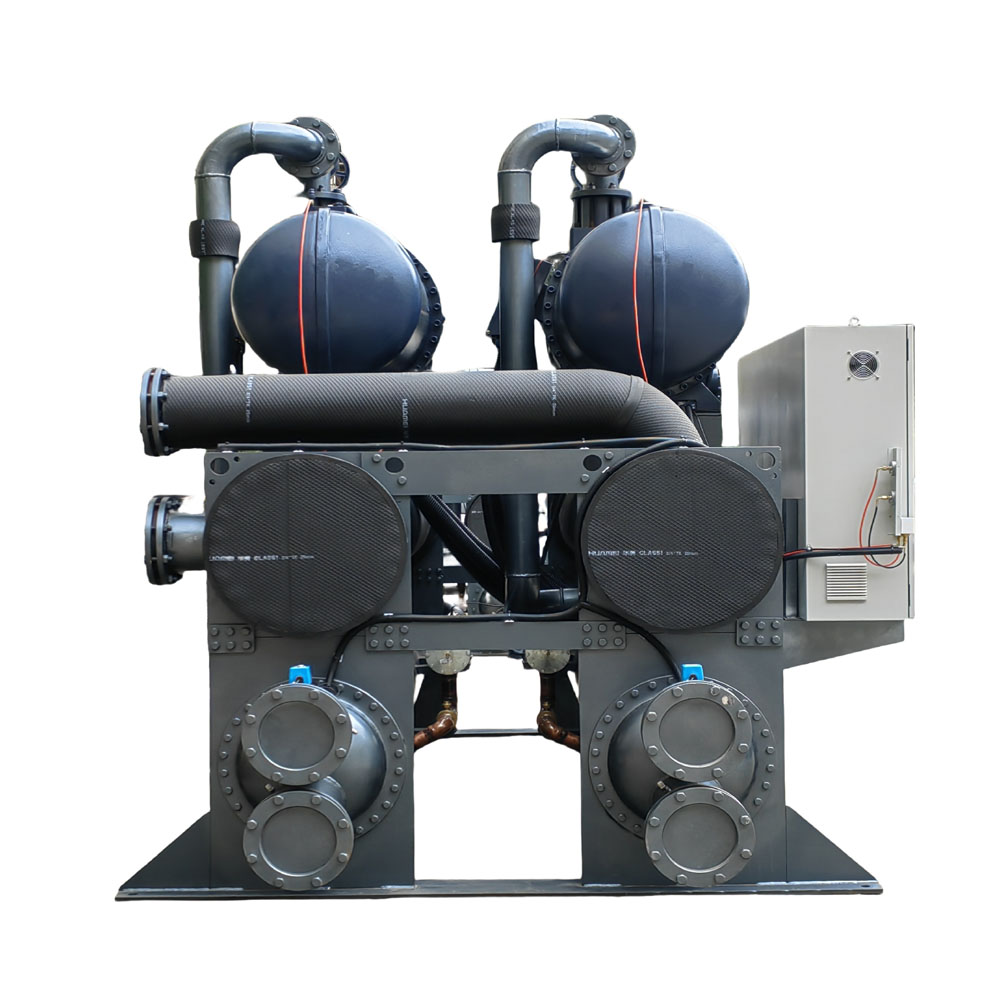
5. एडियाबेटिक कूलिंग लीजियोनेला के जोखिम को कैसे संबोधित करती है?
लीजोनेला स्थिर पानी में बैक्टीरिया पनप सकते हैं, जिससे स्वास्थ्य को खतरा हो सकता है। ठंडा प्रणालियाँ. रुद्धोष्म शीतलन टावर और अन्य वाष्पीकरण प्रणालियाँ हैं लीजियोनेला से ग्रस्त अगर ठीक से प्रबंधन न किया जाए। हालाँकि, अच्छी तरह से डिज़ाइन और रखरखाव किया गया रुद्धोष्म शीतलन प्रणालियाँ के जोखिम को प्रभावी ढंग से कम कर सकते हैं लीजोनेला विकास।
रुद्धोष्म शीतलन प्रणालियाँ कम कर सकते हैं लीजोनेला स्थिर पानी के बजाय ताजा, लगातार बहते पानी का उपयोग करने से जोखिम कम होता है। बंद लूप वाले पानी का उपयोग करना पुनःपरिसंचरण पानी की खपत को काफी हद तक कम किया जा सकता है। बैक्टीरिया के विकास को रोकने के लिए यूवी स्टरलाइज़ेशन या रासायनिक उपचार जैसे जल उपचार विधियों का उपयोग करना। बायोफिल्म गठन को खत्म करने के लिए सिस्टम की नियमित सफाई और कीटाणुशोधन भी महत्वपूर्ण है। जल उपचार रसायन इससे बचना चाहिए.
हमारा रुद्धोष्म शीतलन हमारे ग्राहकों की सुरक्षा और भलाई सुनिश्चित करने के लिए डिज़ाइन में इन उपायों को शामिल किया गया है। हम रोकथाम के महत्व को समझते हैं लीजोनेला संदूषण से बचें और जोखिम को कम करने के लिए उद्योग की सर्वोत्तम प्रथाओं का पालन करें। हम इस पर भी सलाह देते हैं कपड़ा उद्योग के लिए औद्योगिक चिलर उपयोग के मामले.
6. क्या एडियाबेटिक कूलर चलाना अधिक लागत प्रभावी है?
विचार करने के लिए सबसे सम्मोहक कारणों में से एक रुद्धोष्म शीतलन इसकी सबसे बड़ी खूबी यह है कि इसमें लागत में महत्वपूर्ण बचत की संभावना है। रुद्धोष्म कूलर आम तौर पर कम संचालन पारंपरिक प्रणालियों की तुलना में उनकी कम ऊर्जा खपत के कारण। वाष्पीकरण की प्राकृतिक प्रक्रिया पर निर्भर करके, रुद्धोष्म प्रणालियाँ कंप्रेसर आधारित प्रणालियों की तुलना में काफी कम बिजली का उपयोग होता है, जिसके परिणामस्वरूप उपयोगिता बिल कम होता है।
की लागत प्रभावशीलता रुद्धोष्म शीतलन यह समस्या विशेष रूप से गर्म और शुष्क जलवायु वाले क्षेत्रों में स्पष्ट होती है, जहां ठंडा वाष्पीकरण का प्रभाव अधिकतम होता है। ऐसे वातावरण में, रुद्धोष्म कूलर पर्याप्त प्रदान कर सकते हैं ठंडा पारंपरिक एयर कंडीशनर द्वारा आवश्यक ऊर्जा का एक अंश खपत करते हुए क्षमता चिलर्स. रुद्धोष्म शीतलन है गर्मी में कारगर और शुष्क वातावरण.
आइए एक विनिर्माण सुविधा के मामले का अध्ययन करें जो पारंपरिक चिलर सिस्टम से एक में बदल गया रुद्धोष्म शीतलन प्रणाली. कार्यान्वयन करके रुद्धोष्म शीतलन प्रौद्योगिकी, यह सुविधा अपनी शीतलन-संबंधी ऊर्जा खपत को 60% तक कम करने में सक्षम थी, जिसके परिणामस्वरूप $50,000 से अधिक की वार्षिक बचत हुई। इसके अलावा, रुद्धोष्म प्रणाली कम रखरखाव की आवश्यकता होती है, जिससे समग्र लागत बचत में और अधिक योगदान मिलता है।
7. औद्योगिक प्रशीतन में एडियाबेटिक शीतलन की क्या भूमिका है?
रुद्धोष्म शीतलन में तेजी से रोजगार प्राप्त हो रहा है औद्योगिक प्रशीतन दक्षता बढ़ाने और परिचालन लागत कम करने के लिए अनुप्रयोग। एकीकृत करके रुद्धोष्म शीतलन पारंपरिक प्रशीतन प्रणालियों के साथ, उद्योग महत्वपूर्ण ऊर्जा बचत प्राप्त कर सकते हैं और अपने समग्र प्रदर्शन में सुधार कर सकते हैं ठंडा प्रक्रियाएं.
में औद्योगिक प्रशीतन, रुद्धोष्म शीतलन इसका उपयोग प्रशीतन प्रणाली के कंडेनसर में प्रवेश करने वाली हवा को पूर्व-ठंडा करने के लिए किया जा सकता है या चिलरयह पूर्व-शीतलन प्रशीतन प्रणाली पर भार को कम करता है, जिससे यह अधिक कुशलता से संचालित होता है और कम ऊर्जा की खपत करता है। रुद्धोष्म शीतलन औद्योगिक अनुप्रयोगों में उपयोग किए जाने वाले प्रक्रिया जल या अन्य तरल पदार्थों को ठंडा करने के लिए भी इसका उपयोग किया जा सकता है, जो पारंपरिक के लिए एक लागत प्रभावी विकल्प प्रदान करता है ठंडा तरीके.
हमारी विशेषज्ञता औद्योगिक प्रशीतन हमें ऐसे नवीन समाधान विकसित करने की अनुमति दी है जो लाभों को जोड़ते हैं रुद्धोष्म शीतलन पारंपरिक प्रशीतन प्रौद्योगिकियों की विश्वसनीयता के साथ। हमने खाद्य प्रसंस्करण, फार्मास्यूटिकल्स और रासायनिक विनिर्माण सहित विभिन्न उद्योगों में इन समाधानों को सफलतापूर्वक लागू किया है, जिससे हमारे ग्राहकों को उनकी ज़रूरतें पूरी करने में मदद मिली है। ठंडा उद्देश्यों को पूरा करना तथा साथ ही पर्यावरण पर पड़ने वाले प्रभाव को न्यूनतम करना।
8. क्या एडियाबेटिक शीतलन प्रणाली को मौजूदा बुनियादी ढांचे के साथ एकीकृत किया जा सकता है?
रुद्धोष्म शीतलन प्रणालियाँ अक्सर मौजूदा के साथ एकीकृत किया जा सकता है ठंडा बुनियादी ढांचे को बेहतर बनाने के लिए, मौजूदा प्रणालियों की दक्षता को बढ़ाने और उसे बेहतर बनाने के लिए लागत प्रभावी तरीका प्रदान करना। एकीकरण की डिग्री विशिष्ट प्रणाली और अनुप्रयोग पर निर्भर करेगी।
उदाहरण के लिए, रुद्धोष्म कूलर पूरक सुविधा प्रदान करने के लिए मौजूदा एयर हैंडलिंग इकाइयों में इसे फिर से लगाया जा सकता है ठंडा या आने वाली हवा को पूर्व-ठंडा करने के लिए। रुद्धोष्म शीतलन मौजूदा के साथ भी एकीकृत किया जा सकता है चिलर सिस्टम पर लोड कम करने के लिए चिलर्स और उनकी समग्र दक्षता में सुधार होगा।
हमारी टीम को एकीकृत करने में व्यापक अनुभव है रुद्धोष्म शीतलन मौजूदा बुनियादी ढांचे के साथ समाधान। हम अपने ग्राहकों के साथ मिलकर उनके मौजूदा सिस्टम का आकलन करते हैं और ऐसे अनुकूलित समाधान विकसित करते हैं जो लाभ को अधिकतम करते हैं रुद्धोष्म शीतलन जबकि उनके संचालन में व्यवधान को कम से कम किया जा सके। हम आपको इस बारे में एक सूचित निर्णय लेने में मदद कर सकते हैं एयर कूल्ड स्क्रू सेंट्रल चिलर्स.
9. एडियाबेटिक कूलिंग समाधान से कौन से उद्योग सबसे अधिक लाभान्वित होते हैं?
रुद्धोष्म शीतलन समाधान उद्योगों की एक विस्तृत श्रृंखला को महत्वपूर्ण लाभ प्रदान करते हैं, जिनमें शामिल हैं:
- प्लास्टिक और रबर उद्योगसटीक तापमान बनाए रखना महत्वपूर्ण है।
- मशीनिंग उद्योग: शीतलक तरल पदार्थ और मशीनरी.
- खाद्य एवं पेय उद्योग: प्रक्रिया शीतलन, प्रशीतन और भंडारण।
- रासायनिक एवं औषधि उद्योगरासायनिक प्रतिक्रियाओं और भंडारण के लिए तापमान नियंत्रण।
- इलैक्ट्रॉनिक्स उद्योग: शीतलक संवेदनशील इलेक्ट्रॉनिक घटकों की.
- लेजर उद्योगलेज़रों के लिए इष्टतम परिचालन तापमान बनाए रखना।
- मुद्रण उद्योगमुद्रण प्रेस और स्याही के लिए तापमान नियंत्रण।
- चिकित्सा उद्योग: शीतलक चिकित्सा उपकरणों और सुविधाओं की उपलब्धता।
- प्रयोगशालाएँ और अनुसंधान संस्थानप्रयोगों और उपकरणों के लिए सटीक तापमान नियंत्रण।
- डेटा सेंटर: कुशल ठंडा सर्वर और आईटी अवसंरचना के लिए।
10. अपनी आवश्यकताओं के लिए सही एडियाबेटिक कूलिंग सिस्टम कैसे चुनें?
उपयुक्त का चयन करना रुद्धोष्म शीतलन प्रणाली इसमें कई कारकों पर सावधानीपूर्वक विचार करने की आवश्यकता है, जिनमें शामिल हैं:
- शीतलन क्षमता: आवश्यक निर्धारित करें ठंडा ताप भार और वांछित तापमान के आधार पर क्षमता।
- जलवायुस्थानीय जलवायु परिस्थितियों पर विचार करें, रुद्धोष्म शीतलन गर्मी में सबसे अधिक प्रभावी है, शुष्क वातावरण.
- पानी की उपलब्धता: पानी की उपलब्धता और गुणवत्ता का आकलन करें, रुद्धोष्म प्रणालियाँ वाष्पीकरण के लिए पानी पर निर्भर रहें।
- वायु गुणवत्तावायु निस्पंदन की आवश्यकता और बढ़ी हुई आर्द्रता के संभावित प्रभाव का मूल्यांकन करें।
- मौजूदा प्रणालियों के साथ एकीकरण: एकीकरण की व्यवहार्यता का निर्धारण करें रुद्धोष्म शीतलन मौजूदा बुनियादी ढांचे के साथ।
- रखरखाव आवश्यकताएँप्रणाली की रखरखाव आवश्यकताओं और योग्य सेवा कर्मियों की उपलब्धता पर विचार करें।
हमारे विशेषज्ञों की टीम आपको सही चयन करने में सहायता कर सकती है रुद्धोष्म शीतलन प्रणाली आपकी विशिष्ट आवश्यकताओं के लिए। हम समाधानों की एक व्यापक श्रृंखला प्रदान करते हैं, जिनमें शामिल हैं रुद्धोष्म वायु कूलर, रुद्धोष्म शीतलन टावर, और हाइब्रिड सिस्टम जो संयोजित होते हैं रुद्धोष्म शीतलन पारंपरिक प्रशीतन प्रौद्योगिकियों के साथ।
हमसे संपर्क करें आज ही हमसे संपर्क करें और अपनी शीतलन आवश्यकताओं पर चर्चा करें तथा जानें कि हमारा रुद्धोष्म शीतलन समाधान आपके व्यवसाय को लाभ पहुंचा सकते हैं। हमारा लक्ष्य आपको इष्टतम हासिल करने में मदद करना है ठंडा प्रदर्शन में सुधार, अपनी परिचालन लागत में कमी, तथा पर्यावरणीय प्रभाव को न्यूनतम करना।
पूछे जाने वाले प्रश्न
प्रत्यक्ष और अप्रत्यक्ष रुद्धोष्म शीतलन में क्या अंतर है?
प्रत्यक्ष रुद्धोष्म शीतलन इसमें सीधे तौर पर ठंडी हवा को ठंडा किए जाने वाले स्थान पर पहुंचाया जाता है, जबकि अप्रत्यक्ष रूप से रुद्धोष्म शीतलन का उपयोग करता है उष्मा का आदान प्रदान करने वाला स्थानांतरित करने के लिए ठंडा एक अलग वायु धारा या पानी लूप पर प्रभाव।
एडियाबेटिक शीतलन प्रणालियां कितना पानी खपत करती हैं?
पानी की खपत प्रणाली के डिजाइन के आधार पर भिन्न होती है, परिवेश शर्तें, और ठंडा भार.हालाँकि, रुद्धोष्म शीतलन प्रणालियाँ आम तौर पर उपयोग पारंपरिक वाष्पीकरण शीतलन प्रणालियों की तुलना में कम पानी और कूलिंग टावर्स.
क्या एडियाबेटिक शीतलन प्रणाली का उपयोग आर्द्र जलवायु में किया जा सकता है?
रुद्धोष्म शीतलन गर्मी में सबसे अधिक प्रभावी है, शुष्क वातावरणआर्द्र जलवायु में, ठंडा वाष्पीकरण का प्रभाव कम हो जाता है, और वैकल्पिक ठंडा करने के तरीके अधिक उपयुक्त हो सकता है.
एडियाबेटिक शीतलन प्रणालियों के लिए क्या रखरखाव आवश्यक है?
रखरखाव की ज़रूरतें सिस्टम और एप्लीकेशन के आधार पर अलग-अलग होती हैं। हालाँकि, नियमित सफाई, जल उपचार और पंप, पंखे और अन्य घटकों का निरीक्षण करना ज़रूरी है। नलिका आमतौर पर आवश्यक हैं.
रुद्धोष्म कूलर, वाष्पीकरण कूलर से किस प्रकार भिन्न है?
रुद्धोष्म कूलर एक प्रकार का हैं वाष्पीकरण कूलर जो के सिद्धांत पर काम करता है रुद्धोष्म शीतलन, कहाँ पानी वाष्पित हो गया को हवा को ठंडा करो सिस्टम में गर्मी जोड़े बिना। वाष्पीकरण कूलर वाष्पीकरण का उपयोग करने वाले उपकरणों की एक व्यापक श्रेणी को संदर्भित कर सकता है ठंडा। एक रुद्धोष्म प्रणाली एक है शीतलन प्रणाली जो रोजगार देता है रुद्धोष्म शीतलन प्रौद्योगिकी.
क्या एडियाबेटिक शीतलन से कोई पर्यावरणीय चिंताएं जुड़ी हैं?
रुद्धोष्म शीतलन आम तौर पर इसे पर्यावरण के अनुकूल माना जाता है ठंडा इस विधि की वजह से ऊर्जा की खपत कम होती है और रेफ्रिजरेंट्स पर निर्भरता कम होती है। हालांकि, पानी का उपयोग और बैक्टीरिया के पनपने की संभावना, जैसे लीजोनेला, उचित प्रबंधन की आवश्यकता है।
निष्कर्ष: मुख्य बातें
- रुद्धोष्म शीतलन पारंपरिक के लिए एक ऊर्जा कुशल और पर्यावरण के अनुकूल विकल्प है ठंडा तरीके.
- रुद्धोष्म शीतलन प्रणालियाँ कार्य करती हैं वाष्पीकरण की प्राकृतिक प्रक्रिया का उपयोग करके हवा के तापमान को कम किया जा सकता है।
- रुद्धोष्म शीतलन इससे कई लाभ मिलते हैं, जिनमें कम परिचालन लागत, बेहतर वायु गुणवत्ता और कम पर्यावरणीय प्रभाव शामिल हैं।
- रुद्धोष्म शीतलन जैसे अनुप्रयोगों के लिए विशेष रूप से उपयुक्त है डेटा सेंटर, औद्योगिक प्रशीतन, और प्रक्रिया ठंडा करना.
- उचित रूप से डिजाइन और रखरखाव किया गया रुद्धोष्म शीतलन प्रणालियाँ के जोखिम को प्रभावी ढंग से कम कर सकते हैं लीजोनेला विकास।
- सही का चयन रुद्धोष्म शीतलन प्रणाली जैसे कारकों पर सावधानीपूर्वक विचार करने की आवश्यकता है ठंडा क्षमता, जलवायु, जल उपलब्धता और मौजूदा बुनियादी ढांचे के साथ एकीकरण।
गले लगाकर रुद्धोष्म शीतलन समाधानों के माध्यम से, उद्योग महत्वपूर्ण लागत बचत प्राप्त कर सकते हैं, अपने पर्यावरणीय प्रदर्शन में सुधार कर सकते हैं, और विश्वसनीय और कुशल सुनिश्चित कर सकते हैं ठंडा उनके महत्वपूर्ण कार्यों के लिए। एक अग्रणी औद्योगिक जल के रूप में चिलर निर्माता, हम अभिनव और टिकाऊ प्रदान करने के लिए प्रतिबद्ध हैं ठंडा ऐसे समाधान जो हमारे ग्राहकों की उभरती ज़रूरतों को पूरा करते हैं। हम आपको आमंत्रित करते हैं हमसे संपर्क करें यह जानने के लिए कि हमारी विशेषज्ञता कैसी है रुद्धोष्म शीतलन आपके व्यवसाय को लाभ पहुंचा सकता है.
याद रखें, कुशल ठंडा इसका मतलब सिर्फ वांछित तापमान बनाए रखना नहीं है; इसका मतलब है ऐसा करना जो लागत-प्रभावी और पर्यावरण के लिए जिम्मेदार हो। रुद्धोष्म शीतलन इस संतुलन को प्राप्त करने की दिशा में एक मार्ग प्रदान करता है, और हम आपको उस मार्ग पर चलने में मदद करने के लिए यहां मौजूद हैं।
